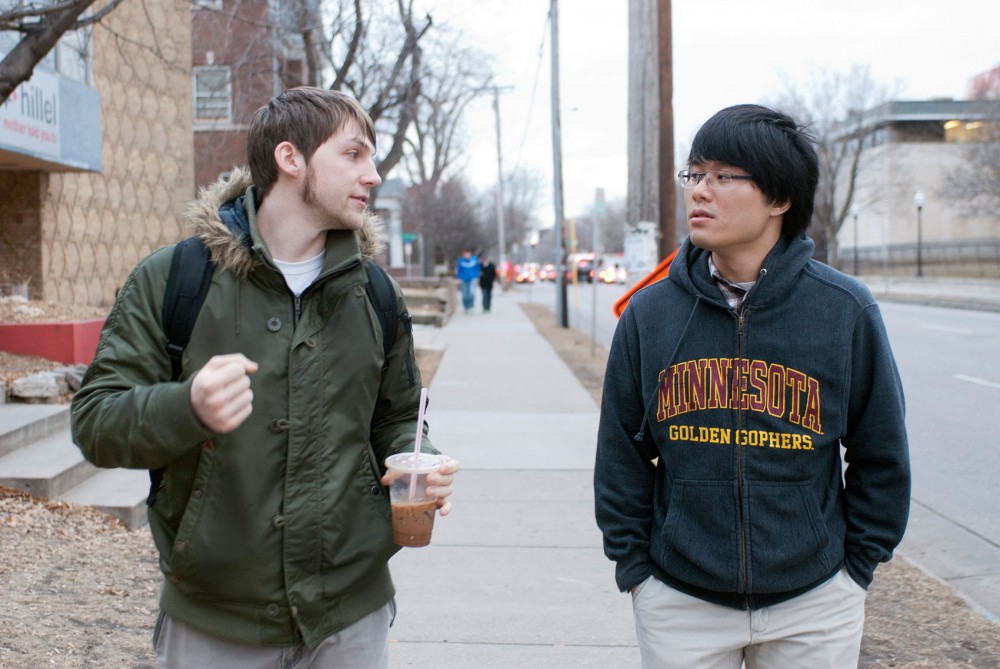A program that connects University of Minnesota students with those who speak the foreign language they are studying both on campus and internationally is exploding with applicants.
TandemPlus, a program that matches students for face-to-face meetings on campus or virtual exchanges through the Internet, has been around in many forms at the University since 1993.
But with the convenience of technology like Skype and TokBox, the number of participants has climbed rapidly since 2008, said program coordinator Catherine Clements.
In fall 2011, almost 700 University students applied to TandemPlus, compared to 132 registered for the entire year in 1998. That number dropped to around 425 this spring, mainly because many of the pairs chose to stay together outside the program, said Anna Kaminski, a TandemPlus assistant.
TandemPlus gives priority to College of Liberal Arts students when matching but is also open to other University students and community members.
It matches students based on the languages they speak as well as interests and sex or age preference.
This semester, there are seven class-to-class exchanges — where students are required to Skype with international students for part of their grade — in French, Spanish, German, Italian and Portuguese.
Clements said the program hasn’t been able to satisfy all the international interest either. For example, a Russian coordinator wanted to set up 4,500 speakers with University students.
“We can’t keep up with the demand from overseas to do these class-to-class exchanges.”
An imbalance
While many students do get matched, others have a tough time because languages like Vietnamese and Thai aren’t taught on campus.
Similarly, there is also an imbalance between native speakers and students learning popular languages.
“There’s always going to be more Americans studying Spanish than native Spanish-speakers here on campus,” Clements said.
The opposite is true of Chinese speakers.
Andrew Ensign, a senior sociology major, is matched with two native Chinese speakers.
While Ensign doesn’t need much help with the Japanese and Mandarin Chinese languages — his wife is Chinese and he studied in Japan for 11 months — he enjoys the opportunity to help others speak English and learn about American culture.
“It’s not only about a language exchange, it’s about meeting people from foreign cultures as well,” Ensign said.
Ensign meets once weekly with his partner Muqian Tian, a junior who wants to improve his English pronunciation.
Tian said for him, the purpose of learning another language isn’t to write a paper for class — it’s to learn to communicate in someone else’s language in the context of their culture.
A cultural exchange
The program does more than share language: It allows students to exchange culture — something that’s necessary to achieve true fluency, Clements said.
TandemPlus allows students to find an “insider” that will help them understand and communicate in their language.
“If you have one other person that you can talk to, you just gain this insight that you’re not going to find in a textbook.”
The program can supplement a class and teach students things they wouldn’t have otherwise thought about.
Mackenzie Haws, a sophomore who studies Spanish, said it takes the language to a more “practical level,” teaching her how to translate concepts and learn phrases that don’t transfer well.
“It’s not always word-to-word,” Haws said.
It also gives students more confidence in speaking, Kaminski said. She said she used to be “jittery” when she spoke Arabic, but students need to cross that barrier to improve.
“You have to get past being afraid to make mistakes, and it helps you get over that.”











